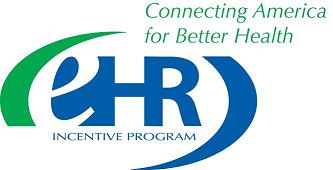 Dissecting Stage 2 of EHR Adoption
Dissecting Stage 2 of EHR Adoption
Eligibility for the CMS EHR Incentive Program was determined by the HITECH Act. Providers and hospitals must meet requirements to be considered eligible professionals or eligible hospitals. Eligible professionals and hospitals are qualified to receive incentive payments if they meet meaningful use of certified technology. The hospital-based provider has been the one eligibility issue that has had some changes from the beginning. The HITECH Act defines hospital-based eligible professionals in Title IV Division B.
(C) Non-application to hospital-based eligible professionals.—
“(i) In general.—No incentive payment may be made under this paragraph in the case of a hospital-based eligible professional.
“(ii) Hospital-based eligible professional.—For purposes of clause (i), the term `hospital-based eligible professional’ means, with respect to covered professional services furnished by an eligible professional during the EHR reporting period for a payment year, an eligible professional, such as a pathologist, anesthesiologist, or emergency physician, who furnishes substantially all of such services in a hospital setting (whether inpatient or outpatient) and through the use of the facilities and equipment, including qualified electronic health records, of the hospital. The determination of whether an eligible professional is a hospital-based eligible professional shall be made on the basis of the site of service (as defined by the Secretary) and without regard to any employment or billing arrangement between the eligible professional and any other provider.
Very soon after the HITECH Act went into effect, it was obvious with the exclusion of hospital-based physicians, that a significant amount of family physicians would not be eligible for incentives with the way the law was written. CMS was unsure how to include or revise this part of the HITECH Act. Industry stakeholders worked behind the scenes, rallied enough support, and found legislation to attach the clarifying language. Congressional supporters had no problem with supporting the effort as they indicated there was never the intent to exclude these physicians in the first place.
HR 4851, the Continuing Extension Act of 2010 was signed into law in April of 2010. The law removed the word “outpatient” from the description of a hospital-based “setting” and replaces it with “inpatient or emergency room setting.” So physicians who treat patients in hospital-based outpatient clinics will be eligible for incentive payments under the HITECH Act. The exclusion remains on inpatient or ER physicians as they are using the hospital resources in their settings. The current language can be found in Section 5 of the Act.
Sec. 5. EHR clarification.
(a) Qualification for clinic-based physicians.—
(1) Medicare.—Section 1848(o)(1)(C)(ii) of the Social Security Act (42 U.S.C. 1395w–4(o)(1)(C)(ii)) is amended by striking “setting (whether inpatient or outpatient)” and inserting “inpatient or emergency room setting”.
(2) Medicaid.—Section 1903(t)(3)(D) of the Social Security Act (42 U.S.C. 1396b(t)(3)(D)) is amended by striking “setting (whether inpatient or outpatient)” and inserting “inpatient or emergency room setting”.
(b) Effective Date.—The amendments made by subsection (a) shall be effective as if included in the enactment of the HITECH Act (included in the American Recovery and Reinvestment Act of 2009 (Public Law 111–5)).
(c) Implementation.—Notwithstanding any other provision of law, the Secretary of Health and Human Services may implement the amendments made by this section by program instruction or otherwise.
In Stage 2, the hospital-based physician gets further defined. An EP that can demonstrate the funding of the acquisition, implementation, and maintenance of a certified EHR technology (CEHRT) can be determined non-hospital-based and be eligible for incentive payments. This also includes supporting hardware and interfaces needed for meaningful use without reimbursement from the hospital of their location. This will be determined through an application process.
